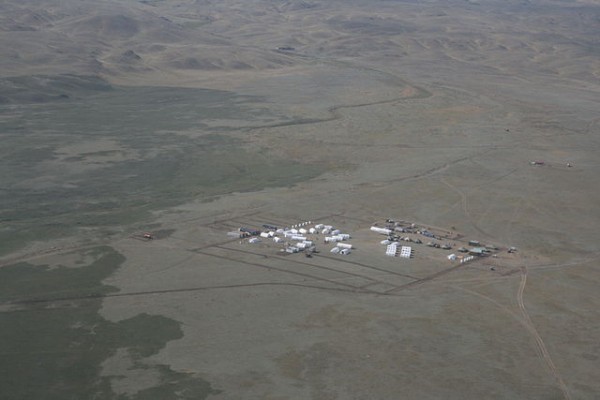
Copyright CTBTO Preparatory Commission
Kazakhstan’s tragic history of nuclear catastrophe still bears heavily on the national consciousness in the midst of new talks with Toshiba. Since Kazakhstan ceased operations in Aktau (the only nuclear power station in the country), the leadership has flirted with the notion of constructing a replacement facility with the Tokyo giant’s cooperation.
When the Soviet Union disintegrated in December 1991, Kazakhstan found itself in possession of 1,410 nuclear warheads; the 4th largest stockpile in the world. This stockpile was handed over to the Russian Federation, and in later years Kazakhstan signed START-1, the Nuclear Non-Proliferation Treaty, and the Comprehensive Test Ban Treaty. In cooperation with its neighbors — Kyrgyztsan, Tajikistan, Turkmenistan and Uzbekistan — it formed a Central Asian Nuclear Weapon Free Zone; the first of its kind on the northern hemisphere.
The most significant purification of the collective memory came with the closure of the nuclear weapons testing sight at Semipalatinsk on Aug. 29, 1991. This was immortalized a decade later with the unveiling of the “stronger than death” monument in Semey, to the victims of Soviet era nuclear testing, and in 2011 Prime Minister Karim Massimov declared Aug. 29 a public holiday.
At the onset of the Cold War, Stalin had selected an area in the northeast of Kazakhstan codenamed “The Polygon,” to test the USSR’s newly developed atomic arsenal. On August 29th (here again we see the significance of the date), 1949, the Soviet Union conducted its breakthrough test on the site with a 22-Kiloton weapon named “First Lightning.” It is not uncommon to hear this region described today as “the world’s worst radiation hotspot.”
Between 1949 and 1989 Kazakhstan was the brunt of the largest nuclear bombardment in history with a further 456 nuclear tests conducted in the area – including a startling 116 conducted above ground in the country’s atmosphere with complete disregard for the fact that wind and rain would subject the surrounding population to the effects of nuclear fallout. One-hundred kilometers north of Semipalatinsk in the village of Dolon, residents were exposed to an extraordinarily high rem dose of 140. In addition to the human toll, an estimated 300,000 square kilometers of land were ravished by these destructive experiments. Indeed, the President of Kazakhstan, Nazarbayev remarked in a 2009 anniversary speech concerning the closure of Semipalatinsk: “a ninth of Kazakhstan’s territory was turned into a nuclear wasteland”
Kazakhstan’s nuclear experience even inspired its own anti-nuclear movement during Gorbachev’s Perestroika reforms. The Kazakh poet Olzhas Suleimenov led the “Nevada Semipalatinsk” movement and openly criticized activities in the Polygon site during a televised poetry reading. Two days later a huge crowd filled the National Writers’ Union in Almaty and held the movement’s first meeting. This movement set the tone for Kazakhstan’s embrace of non-proliferation policies.
Today, Kazakhstan is in talks with the Tokyo multinational Toshiba regarding the construction of a new nuclear power plant. The Toshiba subsidiary company Westinghouse, will design a new plant to be built in Kurchatov by 2030. This deal will also involve the purchase of a one-gigawatt AP1000 nuclear reactor at a cost of $3.7 billion representing a technological watershed for Kazakhstan, whose former Aktau reactor (which ceased operations in 1999) only had a capacity of 135 megawatts. For many Kazakh’s this is a proud embodiment of the country’s rapid modernization process and key position in international nuclear policymaking. Regardless, these moves still represent a harrowing reminder of the national scars left by the inhumane experiments at Semipalatinsk.
Although the human and environmental tolls of nuclear testing remain a sensitive issue for the republic’s citizens, the experience had the consequence of providing the country with the credentials to actively involve itself in global nuclear politics. Kazakhstan currently provides 40 percent of the global uranium market, making it the world’s largest producer; and according to the state’s nuclear agency KazAtomProm in 2014, it had produced 22,800 tons. Kazakhstan’s international prestige in the nuclear sector is indebted to the infrastructure and expertise let over by the Soviet program. History will continue to bear a sobering check on the potential excesses of such ambition.